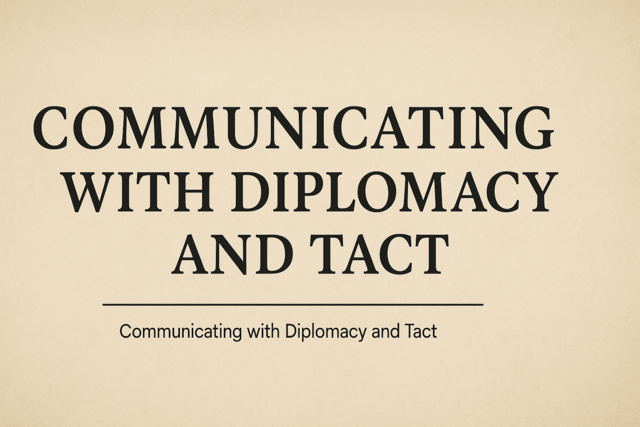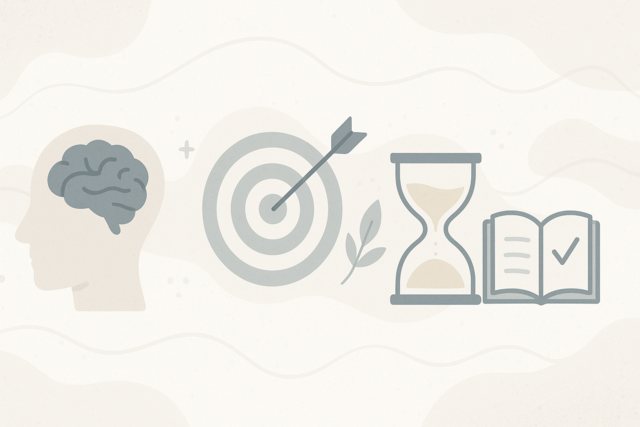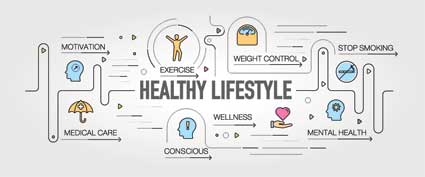As adults, we don't think about our body language all the time. However, if you are an adult with children, somebody is watching your body language -- your child(ren). From the time they are babies, children imitate what you do. You smile at your baby and he smiles back. If you make a habit of patting your child on the back for comfort, he will do that in return (this usually happens around the toddler age). This is also the time they begin to use hand gestures in conjunction with facial expressions. When we praise our children, naturally they smile and feel good about themselves. Parents who are more "touchy" with their children (rubbing their heads, kissing them, hugging and holding them), tend to have more affectionate children, especially if this continues into their teen years. While your children may not allow you to nurture them in front of their friends, you will probably find that they have no problem with it when you are in the privacy of your home.
Also, as children grow from babies to toddlers, their use of pointing and grunting starts to diminish as they begin to learn how to form words. Even so, gestures, such as pointing, actually help to develop a child's communication skills. When they point to a toy and you retrieve it and hand it to them, they feel as if they accomplished something, because you understood exactly what they were saying to you. Even a simple smile or other show of praise will provide the positive reinforcement that a child needs.
Making eye contact is extremely important. Because babies tend to fixate on their parents' faces, it is important that you begin making eye contact with your child from the moment they are born. They explore the whole face, including the eyes. When you put your face close to the baby's face they tend to lift their arms up to your face. When you gaze into their eyes and smile at them, they smile back. So, in essence, a child does not have to be born with natural body language skills. They learn everything from you, and mirror your actions and gestures.
Babies have a natural yearning to communicate. We, as parents, tend to use our body language and gestures to get them to understand what we are saying to them. When they understand, we praise them, clap and cheer. Naturally, this pleases them and they want to learn more. And, so the cycle continues as they grow and learn about the world around them. It starts in the home and then, as they grow, it carries over onto the playground, in the backyard, or the park around the corner, and school.
This is used to instill a schedule and rules with your child. They don't always understand the reason behind what you are saying to them, but if you use both words and body language, they will feel more secure about what you are saying. It helps to form a strong bond between parent and child, as well as maintaining the schedule you desire.
Reading your child's body language is pretty easy for parents (and anyone else around at the time). If they come running up to you with their arms crossed, a pout on their lips, and stomp their feet, it's obvious they are upset about something. When you are reading them a book and they have lost interest, they simply walk away and find something more interesting to do. By using your hand gestures and changing your voice to fit the characters, you will be successful at holding their attention.
Feelings are expressed through body language, especially in children. It is their primal instinct to react to different situations by using body language, even when they can speak in complete sentences. They find it of great importance to smile and flap their arms in the air when they are happy, or stomp their feet and frown when they are sad. You may be busy working on your computer and your child feels momentarily neglected. This will bring about a body language surge on their part and they will usually make it clear to you without using words that they feel neglected.
You want to remember that no matter how busy you are, take the time to turn to your child and look them in the eye. This can be very difficult for busy adults. Negative body language (not looking at them when they are talking to you, or ignoring their question because you are busy), creates problems with the child. Trying to use your body language to focus on them will help build confidence and self esteem in them. Even if you focus on them for a moment, explain to them that you need five minutes of work time, and assure them that you will be with them as soon as you are finished, you will have acknowledged them and shown them that you care about what they have to say.
If you don't practice this positive body language you will most likely find that your child will purposely create distractions in order to get your attention. These will not be pleasant and you will more than likely get upset and forget all about your positive body language. It's a losing situation for both of you.
Body Language That Displays Different Emotions
You can tell a lot about a person by reading their body language. You can tell if they are bored, relaxed, defensive, open, closed, and angry -- or even if they are lying to you. For example, a relaxed person will have their arms hanging loosely beside their body. They may walk with their shoulders hanging slightly. Their head is upright and not necessarily focused on anything in particular. You will also see a noticeably relaxed face on this person. Their hands will usually be hanging loose, or they will use them to enhance what they are saying.
Everything about their body will say they are open. If they are sitting, their legs will be on the floor, or they may be casually crossed. Remember that the legs are hard to read, because they may be hidden underneath the table. When a person is sitting at a table, what you are able to see may be relaxed, but the legs -- which are hidden under the table -- may be held tense and wrapped. Other evidence will be displayed on a person's mouth with a gentle smile, or simply a relaxed expression. When they talk, their mouth will be slightly open and they will talk with a relaxed voice and steady tone.
Other things you might notice will be the muscles in the face, which will also be relaxed. You notice the tight muscles on someone who is not relaxed, so the opposite happens on a relaxed person. Their forehead looks very relaxed and unwrinkled.
On the other hand, a closed person will exhibit opposite gestures. They will generally walk in fast, brisk steps. If they are sitting, their arms will probably be crossed in front of them. Their hands may be clenched together or closed. Their shoulders will be tight, and you might see the muscles in the arms if they are wearing a short-sleeved shirt.
As far as the legs are concerned, again, they may be under the table out of your view; but if you are sitting at the table with them, you may notice the style in which their legs are crossed. If they are crossed at the knee this is a sign of tension. They may even go as far as to wrap their legs around the legs of the table. When you talk to them, they may not look you in the eye. They may tend to look away or keep their head down as they speak. Their voice will be low and the responses are generally short and to the point.
Keep in mind that there is always the problem with misreading someone's body language. There can be different reasons for someone to be closed. Maybe they feel threatened by your body language (or someone else at the table). Closed body language, like the arms wrapped in front of us, is used to create an invisible wall between us and others. It's like we are being defensive to something.
Another factor to consider is an illness, or the weather conditions. If someone is cold, their body language can look very much like a closed person. Also, if they are not feeling very well, or coming down with a cold, they can look inverted. You can usually tell right away from looking into someone's eyes if they don't feel well. There is almost haziness to their gaze that tells us they are feeling under the weather.
Unlike a closed person, a deceptive person displays their body language in a completely different manner. A deceptive person usually acts anxiously. When they talk their voice changes in pitch from high to low, and the speed at which they talk alters, going from fast to slow. It's almost as if they are hiding out and trying not to be found. Their movements are jerky and fast and you'll notice that their smile is not natural, but forced.
Some of us bite our lips or the inside of our mouth when we are anxious. Others put their hands in their pockets and keep them there. If they are wearing a jacket, it is zipped to the top, so nothing can get in (or out). When you talk to this person face-to-face, they can seem very distracted. They are definitely focused on something other than you.
Another interesting form of body language is that of a bored person. They tend to look anywhere but at the person who is talking to them. They find other things to do, from talking with others, or playing with their watch, to staring around the room. They really want to be somewhere else, so they keep watching the clock on the wall. Yawning is a sure sign of boredom, so if you encounter someone doing this, you can pretty much assume that boredom is the cause.
A person who is bored may even seem very interested in what you have to say, but it's only because they can't wait for the conversation to end so they can get on with something else. That's why you find that a person who is bored may be looking around the room and zooming in on the clock continuously. In addition, a bored person will seldom make eye contact with you.
Aggressive body language is readily detectable. You can see the signs clearly on the face. The lines on the forehead are tight, the mouth has pursed lips or a frown, and their eyes will hold signs of aggression. Another sure sign of aggression is the closeness of contact. If they are closely in your face and have the above facial qualities, you are definitely in the realm of an aggressive personality.
Sudden and large movements of the hands and arms are also a sign of aggression. Aggressive people may extend their arm in a sudden movement and their fingers will be pointed up or toward you. If the entire arm sweeps widely, you may want to step out of the situation with this person, as that's a very negative sign. Touching can be offensive to some people, and it's a trait of an aggressive person, as well.
A person who is attentive is listening intently to the speaker. They seem focused on the speaker and are interested in what they have to say. They will not look at their watch or the clock on the wall. If their cell phone rings, they won't answer it and they are not distracted by outside noises. This tells the speaker they are only interested in what they have to say.
An attentive person may also lean forward in their seat to hear the speaker better. Another form is when they keep their body very still, as if they are concentrating on what is being said. These are all forms of respect to the speaker.
When you first meet a dominant person you can generally tell right away. For example, their handshake will be with the palm down, which demonstrates leadership; being on top. They are most likely going to squeeze your hand harder than normal.
In conversing with a dominant person they tend to take control of the conversation. They will ask a lot of questions and usually lead by speaking first. If they are standing, they tend to put their hands on their hips, they hold their head high and get close to the person they are speaking to.
























